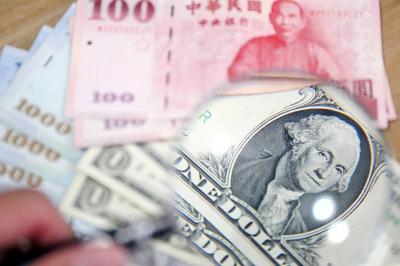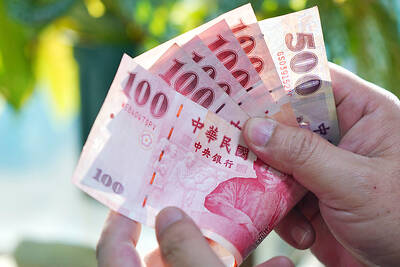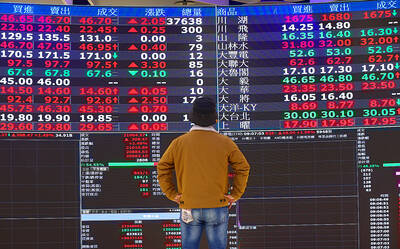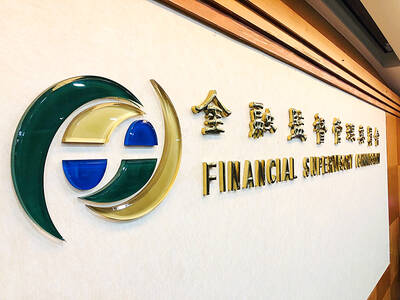China, charting a course of more modest economic growth and mild inflation, yesterday forecast a US$38.6 billion budget deficit this year as it shifts resources to help an impoverished countryside catch up with wealthier cities.
China's development chief, Ma Kai, told the National People's Congress he aimed to keep the world's sixth-biggest economy from being roiled by "big ups and downs."
Ma, who heads the State Development and Reform Commission, a powerful ministry in charge of steering China's breakneck economy, targeted economic growth of around 7 percent last year, a more modest pace than the 9.1 percent pace last year.
There was no hint that China would move soon to revalue its fixed currency, a source of friction with large trade partners like the US who say it gives China an unfair trade advantage.
In laying out the annual budget, Finance Minister Jin Renqing said spending would rise 7 percent and that stimulus bonds once used for public works would be used to boost healthcare, education and other services in the vast countryside.
The rural aid was welcomed with open relief by some of the nearly 3,000 delegates attending the 10-day congress, such as Lin Dongchi, a teacher from China's impoverished southern region of Guangxi.
"We really need this money," Lin, her voice cracking with emotion, said after Jin delivered his speech in the cavernous Great Hall of the People bordering Tiananmen Square.
China, which has issued special bonds every year since the 1997 Asian financial crisis, planned to issue 110 billion yuan worth this year, down 20 percent from last year, Jin said.
The ruling Communist Party fears that a widening wealth gap caused as cities and coastal areas race ahead of the backward hinterland could undermine its authority over the country's 1.3 billion people.
"The government is now stressing a balance between growth and social development. The countryside has developed more slowly and they need more subsidies," said Xie Weihe, a Beijing professor who is a member of an advisory body to parliament.
This year's congress has kicked off with a string of officials signalling an easing of an economy that has quickly become a source of global fascination as it suctions up materials and spews out cheap exports.
Premier Wen Jiabao on Friday vowed to cool off the economy and help hundreds of millions of farmers who are angry at stagnant living standards, corruption and lack of basic services.
But the airing of grievances in China goes only so far.
Plainclothes police dragged one man away from the hall's east gate yesterday after he tried to unveil a placard. It was unclear what he was protesting against, but petitioners from around China come to the capital each year to air grievances.
Jin predicted government expenditure of 2.68 trillion yuan, up 7 percent from last year. That would be nearly 320 billion yuan more than expected revenue, but also mark the first time in several years the deficit has not widened.
"Currently there is a certain uncertainty in global economic development, and the foundation for the sustained development of China's economy is not too stable," Jin said, explaining more deficit spending by the world's fastest-growing major economy.
To help fund this year's budget shortfall and repay old debt, Jin outlined plans to issue 702 billion yuan in treasury bonds this year, about 14 percent more than last year's planned issue of 615 billion yuan.
Ma's outline highlighted the peculiarities of China, where torrid economic growth sits alongside rising unemployment.
Ma said he expected joblessness to rise this year, to 4.7 percent from 4.3 percent last year. Millions in China have been thrown out of work each year as inefficient state companies shed excess workers.
Ma said China aims to check inflation at three percent and cap money supply growth at around 17 percent, a move meant to staunch a flood of money that helped push annual inflation to 3.2 percent in January, the highest level in nearly seven years.
Outlining other economic targets, Ma said China would work to "perfect the exchange rate mechanism" of the yuan while keeping the currency -- pegged at about 8.28 yuan to the US dollar -- basically stable.
Total foreign trade was targeted for an 8 percent rise, Ma said without detailing exports and imports. Last year, China's exports jumped nearly 35 percent. Imports soared almost 40 percent.

The US dollar was trading at NT$29.7 at 10am today on the Taipei Foreign Exchange, as the New Taiwan dollar gained NT$1.364 from the previous close last week. The NT dollar continued to rise today, after surging 3.07 percent on Friday. After opening at NT$30.91, the NT dollar gained more than NT$1 in just 15 minutes, briefly passing the NT$30 mark. Before the US Department of the Treasury's semi-annual currency report came out, expectations that the NT dollar would keep rising were already building. The NT dollar on Friday closed at NT$31.064, up by NT$0.953 — a 3.07 percent single-day gain. Today,

‘SHORT TERM’: The local currency would likely remain strong in the near term, driven by anticipated US trade pressure, capital inflows and expectations of a US Fed rate cut The US dollar is expected to fall below NT$30 in the near term, as traders anticipate increased pressure from Washington for Taiwan to allow the New Taiwan dollar to appreciate, Cathay United Bank (國泰世華銀行) chief economist Lin Chi-chao (林啟超) said. Following a sharp drop in the greenback against the NT dollar on Friday, Lin told the Central News Agency that the local currency is likely to remain strong in the short term, driven in part by market psychology surrounding anticipated US policy pressure. On Friday, the US dollar fell NT$0.953, or 3.07 percent, closing at NT$31.064 — its lowest level since Jan.

The New Taiwan dollar and Taiwanese stocks surged on signs that trade tensions between the world’s top two economies might start easing and as US tech earnings boosted the outlook of the nation’s semiconductor exports. The NT dollar strengthened as much as 3.8 percent versus the US dollar to 30.815, the biggest intraday gain since January 2011, closing at NT$31.064. The benchmark TAIEX jumped 2.73 percent to outperform the region’s equity gauges. Outlook for global trade improved after China said it is assessing possible trade talks with the US, providing a boost for the nation’s currency and shares. As the NT dollar

The Financial Supervisory Commission (FSC) yesterday met with some of the nation’s largest insurance companies as a skyrocketing New Taiwan dollar piles pressure on their hundreds of billions of dollars in US bond investments. The commission has asked some life insurance firms, among the biggest Asian holders of US debt, to discuss how the rapidly strengthening NT dollar has impacted their operations, people familiar with the matter said. The meeting took place as the NT dollar jumped as much as 5 percent yesterday, its biggest intraday gain in more than three decades. The local currency surged as exporters rushed to